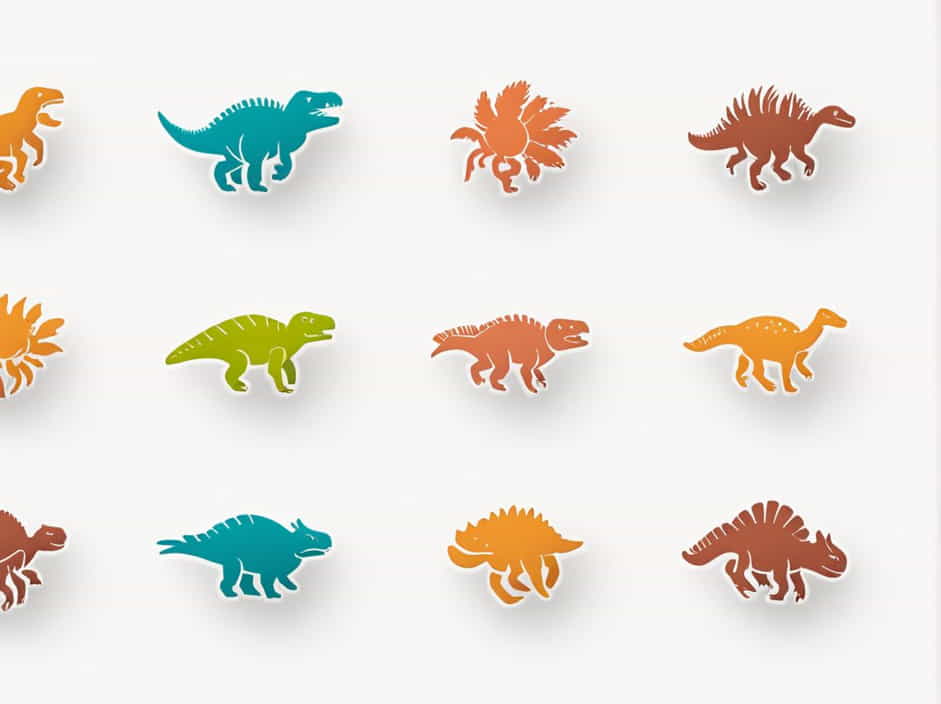The Mesozoic Era, often called the ‘Age of Reptiles,’ lasted from 252 to 66 million years ago. It was a time of great evolutionary advancements, with dinosaurs, marine reptiles, early mammals, and flowering plants dominating the planet. This era is divided into three periods:
- Triassic Period (252-201 million years ago)
- Jurassic Period (201-145 million years ago)
- Cretaceous Period (145-66 million years ago)
Each period saw significant changes in life on Earth, from the rise of dinosaurs to the emergence of birds and flowering plants.
Life in the Triassic Period
The Triassic Period began after the Permian-Triassic mass extinction, the most severe extinction event in Earth’s history. During this time, life slowly recovered, and new groups of organisms emerged.
1. Early Dinosaurs
Dinosaurs first appeared in the late Triassic, around 230 million years ago. These early dinosaurs were relatively small and walked on two legs. Some notable examples include:
- Eoraptor – One of the earliest known dinosaurs, a small, fast-moving predator.
- Coelophysis – A slender, agile carnivore that hunted in packs.
- Plateosaurus – A large, herbivorous dinosaur that walked on two or four legs.
2. Marine Reptiles
The oceans were dominated by marine reptiles, including:
- Ichthyosaurs – Dolphin-like reptiles that were excellent swimmers.
- Nothosaurs – Semi-aquatic reptiles that lived near coastlines.
- Plesiosaurs – Long-necked predators that appeared toward the end of the Triassic.
3. Early Mammals
The first mammals also evolved in the Triassic Period. These early mammals were small, nocturnal insect-eaters that resembled modern-day shrews. One example is Morganucodon, one of the earliest known mammal-like creatures.
Life in the Jurassic Period
The Jurassic Period saw the rise of giant dinosaurs, the dominance of flying reptiles, and the spread of conifer forests. This was the golden age of dinosaurs.
1. Large Dinosaurs
Many of the most famous dinosaurs lived during the Jurassic Period, including:
- Brachiosaurus – A massive, long-necked herbivore that reached up to 25 meters (82 feet) in length.
- Stegosaurus – A plant-eating dinosaur with distinctive bony plates along its back.
- Allosaurus – A large, fearsome predator that ruled the Jurassic landscape.
2. Pterosaurs – The Flying Reptiles
The skies were filled with pterosaurs, the first vertebrates to achieve powered flight. Some well-known examples include:
- Pterodactylus – A small pterosaur with a wingspan of around 1.5 meters (5 feet).
- Rhamphorhynchus – A long-tailed pterosaur that hunted fish.
3. Marine Predators
In the oceans, marine reptiles became larger and more dominant. Some of the top predators included:
- Plesiosaurs – Long-necked reptiles that ambushed fish and squid.
- Ichthyosaurs – Fast-swimming reptiles resembling modern dolphins.
4. Early Birds
One of the most significant evolutionary developments of the Jurassic was the appearance of birds. The famous Archaeopteryx, discovered in Germany, had feathers, wings, and sharp teeth, making it a link between dinosaurs and modern birds.
Life in the Cretaceous Period
The Cretaceous Period was the last chapter of the Mesozoic Era, lasting from 145 to 66 million years ago. During this time, dinosaurs reached their peak, flowering plants spread, and new predators emerged.
1. Iconic Dinosaurs
Some of the most famous dinosaurs of all time lived during the Cretaceous Period, including:
- Tyrannosaurus rex (T. rex) – One of the largest carnivorous dinosaurs, known for its powerful jaws and massive size.
- Triceratops – A plant-eating dinosaur with three horns and a large frill for protection.
- Velociraptor – A fast, intelligent predator with sharp claws and keen hunting skills.
- Spinosaurus – A semi-aquatic dinosaur that hunted fish, possibly the largest land predator ever.
2. New Marine Reptiles
The oceans were full of new predators, such as:
- Mosasaurus – A massive, snake-like marine reptile that dominated the seas.
- Kronosaurus – A large, short-necked plesiosaur that hunted other marine creatures.
3. The Rise of Flowering Plants
One of the biggest changes during the Cretaceous was the spread of flowering plants (angiosperms). These plants:
- Replaced ferns and conifers as the dominant vegetation.
- Provided new food sources for herbivorous dinosaurs and insects.
- Helped shape the modern plant ecosystem we see today.
4. Bird Evolution
Birds became more advanced in the Cretaceous, evolving from their dinosaur ancestors. Some had beaks, feathers, and strong flight abilities, resembling modern birds.
The End of the Mesozoic Era
The Mesozoic Era ended with the Cretaceous-Paleogene (K-Pg) mass extinction about 66 million years ago. This event, likely caused by an asteroid impact, wiped out:
- All non-avian dinosaurs (dinosaurs that were not related to birds).
- Many marine reptiles and pterosaurs.
- A significant portion of marine and terrestrial life.
However, some animals survived, including small mammals, birds, and reptiles. These survivors evolved into the diverse life forms we see today.
The Mesozoic Era was a time of incredible diversity, from giant dinosaurs to powerful marine reptiles and early mammals. Each period—Triassic, Jurassic, and Cretaceous—brought new evolutionary changes, shaping the future of life on Earth. Though the era ended in a catastrophic extinction, it set the stage for the rise of mammals and birds, leading to the modern world we know today.
